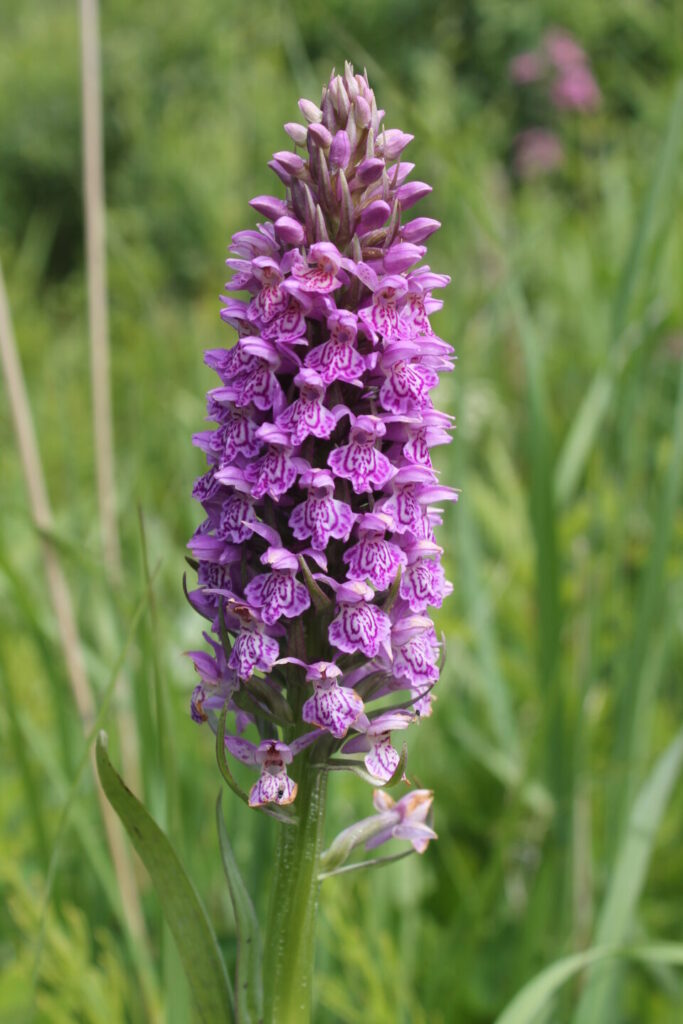A small patch of spring fen has survived on the shores of Lake Arbi. Most of the Estonian fens have been drained for forestry, agriculture, buildings and roads. Therefore, many fen species are rare. Fens are groundwater-fed; thus, the water has flowed through mineral sediments. Calcium, iron, and other chemical elements leach into the water from those sediments. So the soil of a spring fen is mineral-rich and constantly wet. Many fascinating species have specialised in such conditions.

The fen next to lake Arbi. Designer: Piret Vutt.
Why could we find the exciting fen-habitat here? This has several reasons.
- Water seeps through the hills on this side of the lake. Partly this water originates from Lake Verevi, which is located 7,2 m higher;
- Mowing once a year prevents overgrowing by trees, bushes and reed (overgrowing would otherwise be relatively intense, because of some ditches and eutrophication);
- No soil or mud settled on this area;
- No intensive drainage.
The species of conservation concern found in Lake Arbi fen are: marsh saxifrage (Saxifraga hirculus), early marsh-orchid (Dactylorhiza incarnata), broad-leaved marsh orchid (D. majalis subsp. baltica), marsh helleborine (Epipactis palustris), eggleaf twayblade (Neottia ovata), Geyer’s whorl snail (Vertigo geyeri), narrow-mouthed whorl snail (V. angustior).


Early marsh-orchid and broad-leaved marsh orchid are two species that are protected under the Estonian Nature Conservation Act. Photo: Rein Kuresoo and AdobeStock

Whorl snails are tiny. The black dash under the snail marks 1 mm in reality. Photo: Henn Timm.
The residents of Elva and the guests have a rare opportunity to enjoy and get to know the fen habitat in the heart of the town.
Author: Liina Remm
Main photo: Ragnar Vutt
